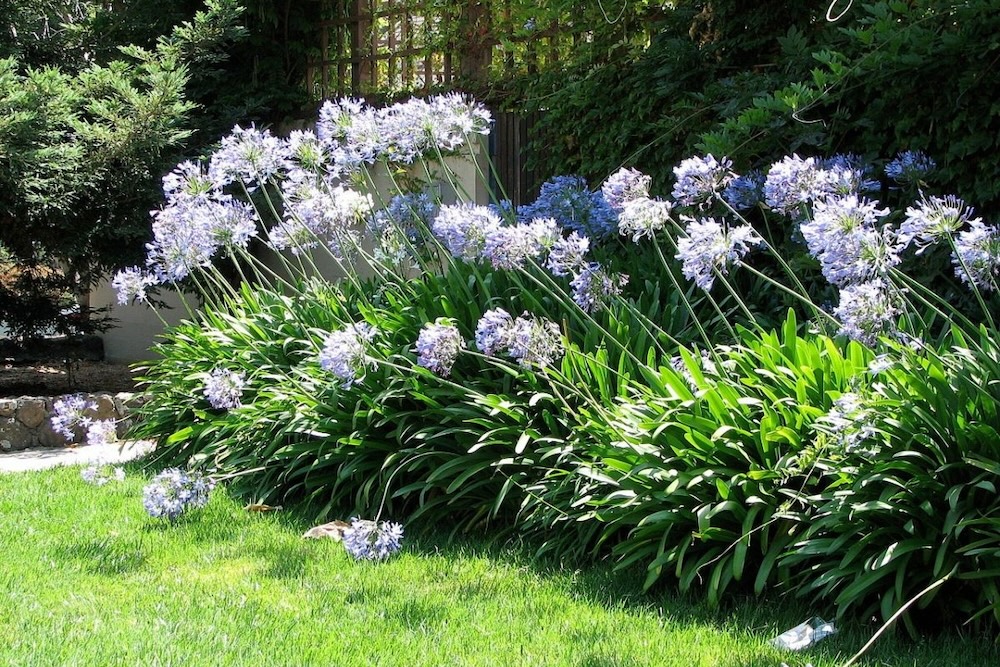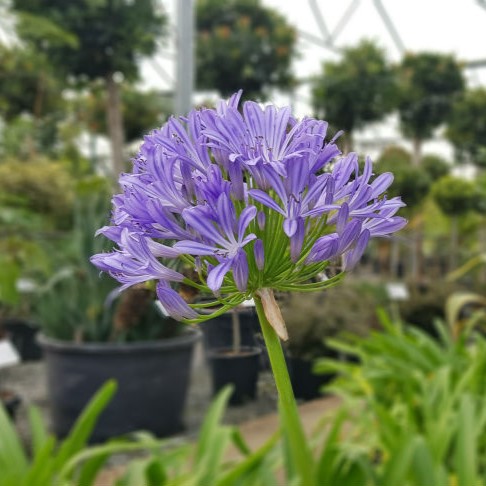Letting Loose the Secret to Effective Agapanthus Cultivation: Tips and Tricks for a Flourishing Yard
In the world of gardening, cultivating agapanthus effectively calls for a tactical strategy that encompasses numerous aspects of plant treatment. With careful focus to information, one can unlock the secrets to nurturing these sensational blooms, causing a yard that grows with elegance and vibrancy. By understanding the nuances of agapanthus growing, one can produce an environment where these plants flourish and bloom perfectly. In the complying with conversation, we will discover crucial tips and methods that will guide you towards a thriving agapanthus garden, using insights right into ideal techniques, soil problems, sprinkling techniques, and much more.
Planting Agapanthus: Best Practices
When growing Agapanthus, proper soil prep work is important for ensuring effective development and development of these beautiful flowers. Agapanthus, generally referred to as Lily of the Nile or African lily, grows in well-draining dirt with a slightly acidic to neutral pH degree - Agapanthus. Before growing, it is critical to modify heavy clay soils with raw material such as compost or peat moss to improve water drainage and give crucial nutrients for the plants
To grow Agapanthus, select an area that gets complete sunlight to partial color, as this will promote healthy and balanced development and bountiful flowering. Dig an opening two times the size of the plant's root sphere and position the Agapanthus at the same deepness it was previously growing. Gently backfill the opening with dirt, pushing down strongly to eliminate any air pockets around the roots.
Water the recently planted Agapanthus thoroughly and remain to keep the dirt evenly moist, particularly during the plant's energetic expanding period. Agapanthus. Applying a well balanced fertilizer once a month can additionally support the plant's development and blooming. By following these ideal practices for planting Agapanthus, you can produce a stunning display screen of these captivating blossoms in your yard
Ideal Soil Conditions for Agapanthus
For ideal development and growing success of Agapanthus plants, making sure the dirt conditions are perfect is vital. Agapanthus flourishes in well-draining soil with a slightly acidic to neutral pH degree varying from 6.0 to 7.0. This kind of soil enables adequate water drain, stopping waterlogging which can lead to root rot. To boost soil water drainage, think about including natural issue such as garden compost or peat moss when preparing the planting website. Moreover, Agapanthus likes dirt that is abundant in nutrients, so integrating a well balanced fertilizer throughout the expanding season can advertise healthy and balanced development and vibrant flowers.

Watering and Feeding Tips
To make sure healthy growth and lively blooms, proper watering and fertilizing methods are important for successful Agapanthus cultivation. Agapanthus plants benefit from routine watering, especially throughout the expanding period. It is advised to water deeply as soon as a week, making certain the dirt is moist but not waterlogged. Throughout warm climate or in pots, more constant watering might be required to avoid the dirt from drying out completely.
When it pertains to feeding Agapanthus, a balanced fertilizer with equivalent parts nitrogen, phosphorus, and potassium can be used in the spring to promote healthy and balanced development and flowering. Slow-release fertilizers are optimal for supplying nutrients slowly over an extended duration. Stay clear of over-fertilizing, as this can lead to extreme vegetation growth at the cost of blooms.
Additionally, including raw material like compost into the soil can improve nutrient levels and boost dirt structure, helping in the total health and wellness of the Agapanthus plants. By following these watering and feeding tips, gardeners can guarantee their Agapanthus plants prosper and produce stunning displays of blossoms.
Trimming and Deadheading Strategies
Proper trimming and deadheading methods play a critical function in maintaining the wellness and aesthetic appeals of Agapanthus plants, complementing the crucial practices of watering and feeding for successful growing. Trimming Agapanthus involves eliminating invested blossom heads, dead or yellowing leaves, and general shaping of the plant to promote much better development. Deadheading, the procedure of eliminating discolored blossoms, not just enhances the plant's look however also motivates further growing.
When deadheading Agapanthus, it is recommended to trim off the flower stem at the base utilizing sharp, clean shears. This procedure reroutes the plant's energy from seed production back into root and foliage growth, advertising go now a much healthier and much more robust plant. Normal deadheading can expand the flowering duration of Agapanthus and avoid self-seeding, which can bring about congestion.
In terms of pruning, Agapanthus generally gain from a light trim after flowering to clean up the plant and encourage fresh growth. Reducing back the invested flower stems and eliminating any kind of damaged or dead vegetation aids maintain the plant's vigor and total appearance. Nonetheless, it is essential to prevent reducing right into the crown of the plant, as this can damage its health and wellness.

Protecting Agapanthus From Pests and Diseases
Executing efficient bug and disease management techniques is vital to securing the health and wellness and vigor of Agapanthus plants in cultivation. One typical pest that affects Agapanthus is the Agapanthus borer, a caterpillar that tunnels into the plant, triggering damages to the leaves and flowers.
Along with parasites, Agapanthus are susceptible to illness such as origin rot and fungal leaf places. These concerns can commonly be stopped by guaranteeing appropriate drainage and avoiding overwatering. If signs of illness show up, affected components of the plant must be quickly gotten rid of to avoid further spread. Fungicides may additionally be used as a treatment measure, following the producer's guidelines very carefully. By staying vigilant and resolving insect and disease problems quickly, garden enthusiasts can help their Agapanthus grow and flourish.

Verdict
In verdict, effective farming of agapanthus calls for correct growing techniques, excellent dirt problems, sufficient watering and fertilizing, routine pruning and deadheading, and protection from bugs and conditions. By adhering to these pointers and techniques, garden enthusiasts can ensure a flourishing yard filled with stunning agapanthus flowers. Agapanthus. Bear in mind to maintain regular care and attention to detail to advertise the wellness and long life of these stunning plants
When growing Agapanthus, proper soil preparation is Continue crucial for making sure effective development and advancement of these attractive flowers.Water the recently planted Agapanthus completely and continue to maintain the dirt equally damp, specifically throughout the plant's energetic expanding period.For optimum growth and growing success of Agapanthus plants, ensuring the soil problems are ideal is essential. When hair transplanting or planting Agapanthus, ensure the soil is well-prepared to provide the necessary structure for the plants to establish themselves effectively. One common pest that affects Agapanthus is the Agapanthus borer, a caterpillar that tunnels into the plant, creating damages to the blossoms and fallen leaves.